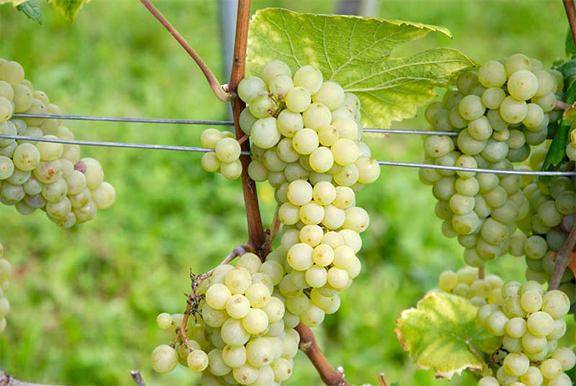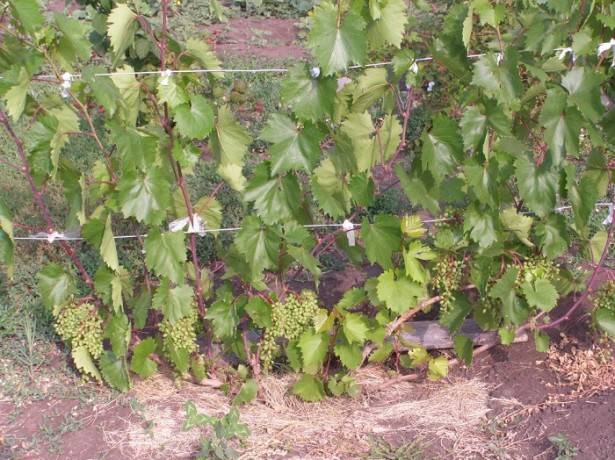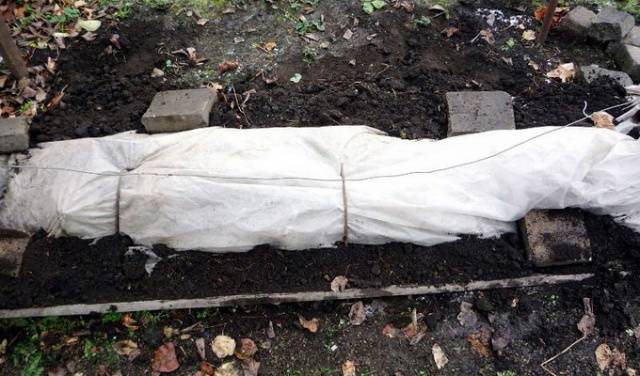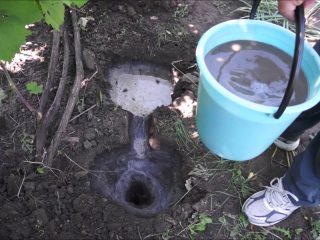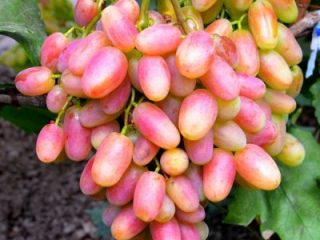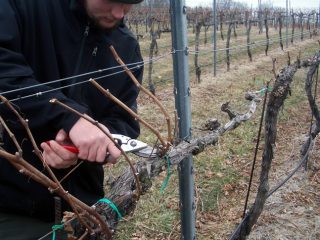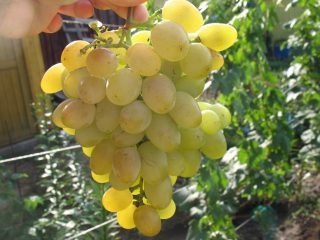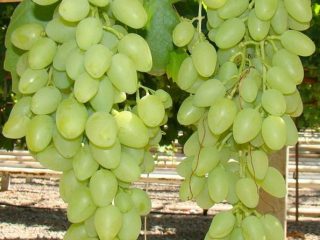Content
The grape with the good name Druzhba is the result of the joint work of Bulgarian and Russian breeders. The variety turned out to be unpretentious. A distinctive feature is resistance to diseases and excellent taste of the berries. Even a beginner can grow Druzhba grapes.
Description of the variety
The Druzhba variety is adapted to the domestic climate, which allows grapes to be grown in almost all regions. Frost resistance is considered high, but expose the vine to temperatures below -23OWith it is impossible. In the northern regions, they practice complete covering of bushes for the winter. Winegrowers in the southern regions make do with only hilling. Sometimes partial cover is used.
Considering the Druzhba grapes, description of the variety, photos, reviews, it is worth noting the average growth of the vine. The bushes do not grow to enormous sizes. The leaves are small, light green in color and there are very few of them on the vine.
The clusters of the Druzhba variety grow small. The average weight of one bunch is 300 g. The shape of the bunch is elongated and cone-shaped. The berries are not collected tightly. The weight of one fruit is about 4 g. The berry is spherical, sometimes slightly elongated, with a diameter of 22 mm. When ripe, the skin turns white. In the sun, the barrels of the grapes get a ruddy tan.
The Druzhba variety is considered early ripening. The ripening of the bunches begins on the 115th day from the moment the buds awaken. Harvesting usually begins around the twentieth of August. Late ripening of the berries indicates that the bush is overloaded. With normal regulation of the eyes, the yield of the Druzhba variety reaches 7 kg. About 180 centners of berries are harvested from 1 hectare of plantation.
According to the tasting assessment, the taste of nutmeg predominates in the berries. The pulp is juicy, watery, very tender. Sugar content is 21%. Druzhba grape berries are universal. In production, dry and dessert wines and sparkling champagne are made from the fruits. At home, grapes are used for juice, compotes are prepared, and cakes are decorated.
Another feature of the Druzhba grape variety is its resistance to fungi. However, bushes must be treated against mildew at least twice a season. At home, winegrowers prefer Bordeaux liquid to fight diseases.
The video talks about the Druzhba grape variety:
Positive and negative traits
Despite the small berries and small clusters, the Druzhba grape variety has many positive characteristics:
- resistance to fungal diseases;
- early ripening of the crop;
- vine resistance to low temperatures;
- excellent nutmeg taste of berries;
- universal purpose of fruits.
The disadvantage is the difficulty of care due to the mandatory normalization of the eyes. The bunches are not in demand for sale. The grapes are tasty, but small berries and loose clusters do not create a good presentation.
Planting seedlings
Druzhba grape seedlings can be planted in rows in a trench or in holes. In the south they practice autumn planting. It is better to plant seedlings in the central zone in the spring. The pits are prepared in the fall, loading them with organic matter and fertile soil. Planting time depends on the condition of the seedling. If the leaves have already blossomed, then the grapes are planted after the night frosts have gone away. Usually this is at the end of April - beginning of May. Unawakened seedlings can be planted from mid-March.
The Druzhba grape variety grows well on light soils. Sandy and loamy soil is acceptable for bushes. The main root goes deep into the ground, so Druzhba grapes cannot be planted in lowlands with high groundwater. The place for the seedling is chosen to be sunny, not shaded by the crown of tall trees, preferably on the south side of the site.
The requirement of grapes for nutrients forces winegrowers to dig a deep hole. The shape can be round or square. This does not play a special role. The optimal depth and diameter of the hole is 80 cm. At the bottom of the hole, drainage is poured from stones and sand 15–20 cm thick. The next layer is formed from fertile black soil mixed with 1 bucket of compost or humus and the addition of 1 liter of wood ash. From mineral fertilizers, 200 g of superphosphate and 150 g of potassium are mixed.
Before planting a Druzhba grape seedling, a mound is formed at the bottom of the prepared hole. After all the layer-by-layer loadings, the depth of the hole should be about 40–50 cm. The grape seedling is placed with its heel on the mound, straightening the root system, and carefully covered with loose soil.At least 2 buckets of water are poured into the hole. After the liquid is absorbed, the soil will settle and needs to be replenished.
Features of caring for the variety
The Druzhba variety, like other grapes, requires timely watering. The intensity depends on weather conditions and soil moisture. At least 20 liters of water are poured under one adult bush. Watering is required before the flowers bloom, while the berries are pouring and in the fall before wintering. After water is absorbed, a crust forms on the surface of the soil. For better access of oxygen to the roots, the soil is loosened with a hoe. You can cover it with a thick layer of mulch made from straw, peat or sawdust. Organic mound will prevent moisture evaporation and rapid germination weed and the formation of a dried crust.
During the season, the Druzhba grape variety is fed at least three times. In the spring, before the release of color, the bushes are topped with a solution of bird droppings or superphosphate. After 15 days, fertilizing is repeated. During the beginning of the ovary, the grapes are fertilized with nitroammophoska.
Until the age of three, only sanitary pruning is performed on the bushes. Remove frost-bound and damaged vines. From the third year of life, the bush is formed according to all the rules. The vine is pruned, leaving shoots with 6–8 eyes. The total load on the bush should not exceed 35 buds. Pruning is carried out in the fall after the leaves have dropped. In spring, only frozen and damaged vines are removed. In summer, Druzhba grapes grow tied to a trellis up to 2 m high.
The frost resistance of the variety allows the vine to overwinter in the southern regions on a trellis.For the central zone and northern regions, covering grapes is acceptable. Annual seedlings simply spud well. The vine of an adult bush is tied with ropes, bent to the ground and wrapped with any non-woven material.
Before wintering, the Druzhba grape bushes are generously filled with water. There is no need to cover the vine early. Heat can awaken dormant buds. The vine is covered with the onset of the first frost. Instead of material, you can use mats made of reeds or straw. In winter, a mound of snow is raked over the grapes.
Pest and disease control
The Druzhba variety resists fungal diseases and gray rot well, but no one has canceled prevention. During an epidemic, even a strong immune system cannot resist bacteria. There are a number of important rules aimed at preventing grape diseases:
- The Druzhba grape variety must be sprayed against mildew twice a season. It is optimal to use fungicides that additionally protect against the spread of oidium.
- Regular watering should not lead to waterlogging of the soil. Excess moisture in the heat promotes the development of fungus.
- Regular pruning should be aimed not only at the formation of a bush. Remove vines with visible damage and dry shoots. When rot spreads in summer, cut off the affected shoots.
- In autumn, dry leaves, berries and fallen small branches should not be left under the grape bushes. Over the summer, many harmful microorganisms and pests have accumulated here. Everything from under the grape bushes is raked out and burned.
- During the season, constant maintenance of the soil near the bushes is required. Be sure to carry out loosening, weeding, and mulching. After harvesting, the soil is dug up onto the bayonet of a shovel.
- The main pest for any grapes is wasps. The Druzhba variety is sugary, which greatly attracts insects. Bottle traps help control wasps. If possible, destroy wasp nests. You can spray the berries with special preparations, but eating chemicals is not healthy.
Sometimes winegrowers practice immersing grapes in gauze bags. The method is effective if the material does not touch the berries. Otherwise, the wasps will suck the juice from the berries through the gauze.
Reviews
At the end of the review of the description of the variety, let's take a look at what gardeners' reviews say about the Druzhba grapes.

